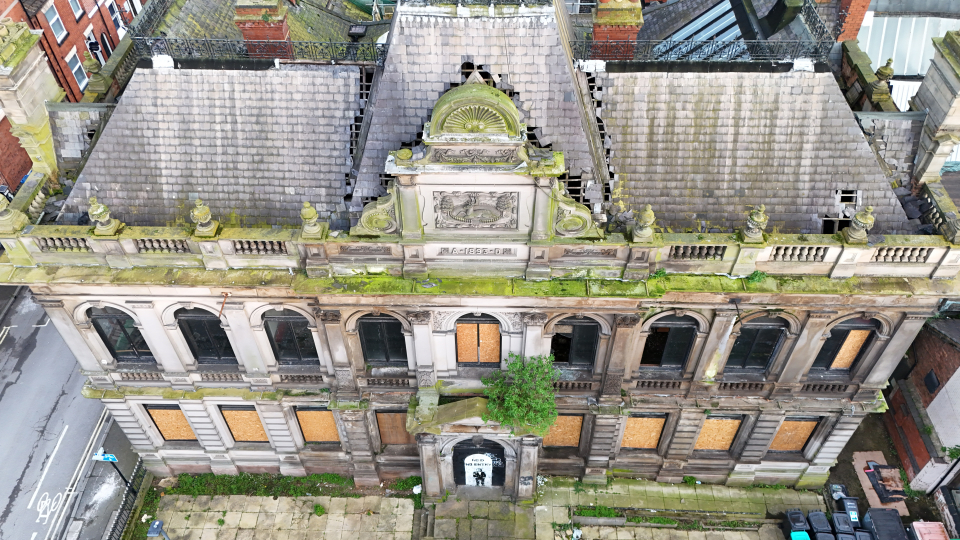The Grade II listed building designed by Giles & Brookhouse and dating from 1871, is in urgent need of investment and sensitive re-use to survive.

Photo credit: Andy Savage
This elegant renaissance-style palazzo was built to house the offices of the Derby Poor Law Guardians and subsequently the Derby Education Department. The only life it plays host to now is the buddleia sprouting from crevices in its walls and parapets. Otherwise, it stands empty and its condition deteriorates. In the past it was used as a popular nightclub – Berlins – then, at the millennium, changed hands to become a different club, which in turn closed in the mid-2000s. It was sold again in 2009 but has since remained unused. With an entertainment venue opening opposite, this well-located building should benefit from increased visitors coming to the area and would lend itself to a variety of new uses.
This hugely impressive building speaks to the pride of the city, and the evident belief of the fundamental importance of education. Atop the central bay is a carved panel bearing the Derby Borough coat of arms, featuring a buck within the palings of a park. The strongly articulated façade bears all the hallmarks of the Italian palazzo style: a raised ground floor and grand piano nobile at first floor; heavy rustication, pilasters with Corinthianesque features, copious windows – those at first-floor level elegantly arched – and excellent carved detailing. Inside the building has a stained-glass window with the legend “Blessed is he who Careth for the poor.”
In the last two years the building has deteriorated heavily. Substantial areas of leading and roof slate have gone missing, resulting in the serious decline of the building’s fabric. The building’s current ownership can be traced back to the Tchenguiz Family Trust, which is a major investor in property. We appeal to the Trust to take steps to safeguard both fabric and future of this fine listed building.
Having already served a number of uses historically, there is undoubtedly scope for converting the building, which perhaps lends itself to a mixed-use conversion as a restaurant or bar and offices, drawing on the opportunities offered by the development of the neighbouring site.
Griff Rhys Jones, Victorian Society President, said: ‘Oh dear. This is a great building. In a great location. It has earned its own keep for a long time. What is happening here? It’s a familiar story. An ownership that doesn’t seem to notice its terrible recent decay. The front of this magnificent building declares its pride in Derby. Derby surely has pride in it too. We beg the family trust who own it to concentrate on its reuse, recycling and important future.’
James Hughes, Director of the Victorian Society, said: ‘Despite its poor state of repair, the dignified architectural character of this building shines through. But for how much longer will that be the case? The condition of its roof has worsened considerably in recent months, leaving gaping holes in the roof that are discernible even from the street, and with them water pouring in every time it rains. In such circumstances, the fabric of the building can only deteriorate drastically. Immediate intervention is required to make the building watertight. Meanwhile, the process of securing a conservation-led regeneration of the building should begin.’
The full Top Ten list can be read here and includes a requisitioned school where author Vera Brittain nursed during WWI, the last of one of the world’s first purpose-built amusement parks, a banqueting hall for the workers, one of the first tennis pavilions in the world, and a building where the first £1m cheque was signed. The listed buildings include a Scheduled Monument and two Grade II*- listed buildings.
The list is based on public nominations from across England and Wales, and the buildings selected represent industrial, religious, domestic, and civic architecture from across the nation with unique historical and community significance and value. Nominated buildings must be dated between 1837 and 1914. The Victorian Society has announced its list of Top Ten Endangered buildings fourteen times.